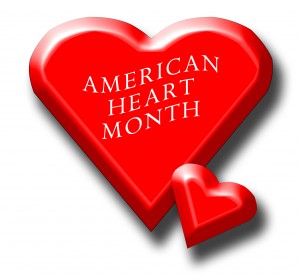Oh, Baby… CPR
My son was born at 2:07 a.m. on a Monday morning after a routine, full-term pregnancy. As a nervous, exhausted new Mom, I let the nurses take him for his first feeding. A couple of hours later, they wheeled him into my room in a neonatal incubator. His lips had turned blue when the nurses fed him, and they had detected a heart murmur. They took him to the Neonatal Intestive Care Unit (NICU) for observation. Before he was even half a day old, he had had an EKG and echo cardiogram which revealed several serious defects in his heart which would require open-heart surgery within the next year. So began our journey of parenthood and affairs of the heart.
Before we were allowed to take him home from the NICU, our cardiologist insisted that we receive training to properly use a stethoscope, measure and dispense medications (which required very precise calculations for a small baby), and learn infant CPR. I was familiar with adult CPR, and we’ve all seen it performed hundreds of times in the media. But until that point, I had never stopped to think that a baby’s tiny body required a very different approach. For example, when giving breaths, the adult’s mouth should cover both the baby’s nose and mouth. Additionally, baby lungs are much smaller and more delicate than an adult’s, so the breaths must be given gently. The hand-over-hand stance of adult CPR is far too powerful for a baby’s chest; only two fingers apply compressions just below the baby’s nipple line.
This link from the University of Washington provides a good overview and video of infant CPR. But please don’t rely on just a web page or video for complete instruction. We were professionally trained by staff at the hospital, and I recommend all parents and caregivers of babies and young children take a formal infant CPR class at your local American Red Cross.
February is American Heart Month as proclaimed by U.S. Presidents since 1963. Heart disease, including stroke, is the #1 killer of Americans, and American Heart Month strives to raise awareness of the problem as well as remind us of the many things we can do to be more heart-healthy. Don’t smoke. Eat healthy foods. Exercise regularly. The American Heart Association website is filled with valuable information to help people live healthier lives “free of cardiovascular disesases and stroke.”
Although we experienced some touch-and-go moments, we fortunately never had to use our baby CPR skills. However, I am glad that we learned the procedure because it provided us with some extra confidence to support our son amidst the other trials he experienced over the years: cardiac catheterizations, feeding tubes, holter monitors, one stent and two open-heart operations. So this February, we are happy to celebrate our 15th American Heart Month with our son, who is now healthy and strong, and we send our love and support to all parents and their children with special hearts.
This is a great post, Donna and I will be sharing with my Twitter friends and will post to FB. Thanks for this! I have some friends who are new Moms and they would also find this valuable information and resources.
Well, if I do say so myself, I’d say that your son turned out just perfect. I mean, despite his “issues.”
What?? I was talking about the heart thing! I bet you were thinking I was referring to my inability to act in a civilized manner! (Or my ability to consistently write run-on sentences) HAHA! No.
My son did turn out just perfect, and with a great sense of humor.